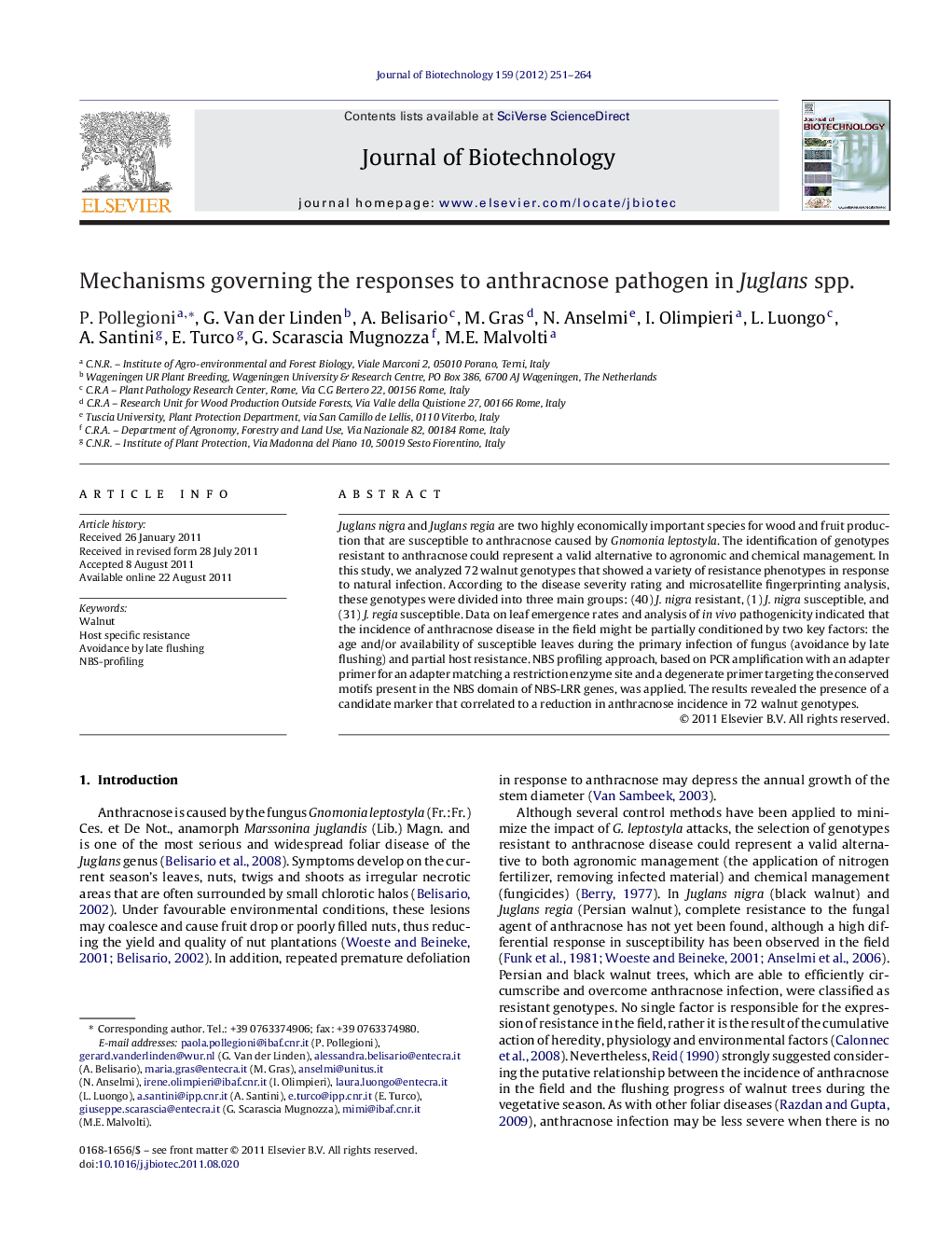| Article ID | Journal | Published Year | Pages | File Type |
|---|---|---|---|---|
| 23588 | Journal of Biotechnology | 2012 | 14 Pages |
Juglans nigra and Juglans regia are two highly economically important species for wood and fruit production that are susceptible to anthracnose caused by Gnomonia leptostyla. The identification of genotypes resistant to anthracnose could represent a valid alternative to agronomic and chemical management. In this study, we analyzed 72 walnut genotypes that showed a variety of resistance phenotypes in response to natural infection. According to the disease severity rating and microsatellite fingerprinting analysis, these genotypes were divided into three main groups: (40) J. nigra resistant, (1) J. nigra susceptible, and (31) J. regia susceptible. Data on leaf emergence rates and analysis of in vivo pathogenicity indicated that the incidence of anthracnose disease in the field might be partially conditioned by two key factors: the age and/or availability of susceptible leaves during the primary infection of fungus (avoidance by late flushing) and partial host resistance. NBS profiling approach, based on PCR amplification with an adapter primer for an adapter matching a restriction enzyme site and a degenerate primer targeting the conserved motifs present in the NBS domain of NBS-LRR genes, was applied. The results revealed the presence of a candidate marker that correlated to a reduction in anthracnose incidence in 72 walnut genotypes.
